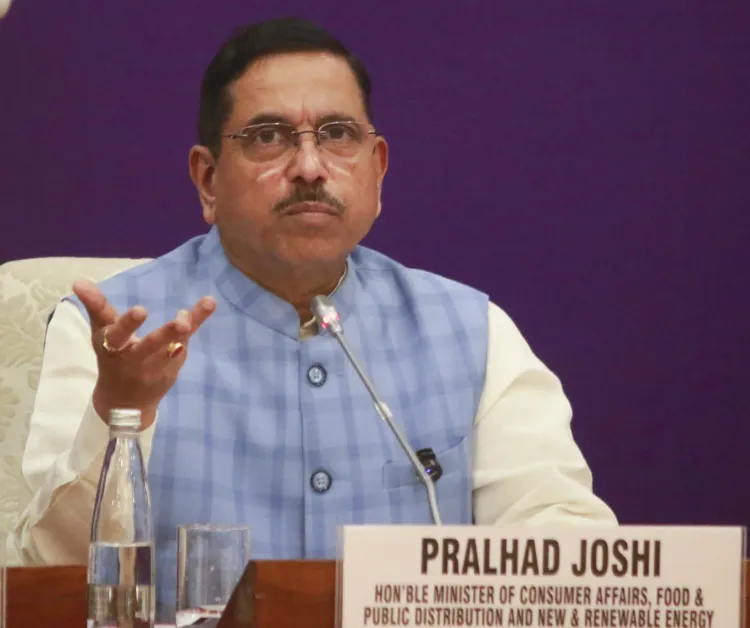Can India Provide Solar Power 24/7 at a Lower Cost than Coal?

Synopsis
Key Takeaways
- Solar+storage systems are now cheaper than coal-fired electricity in India.
- India can provide 24/7 clean power at a cost below Rs 6/kWh.
- Battery storage costs have dropped by over 50% in 18 months.
- India's solar energy capacity has surged from 2.82 GW in 2014 to 105.65 GW.
- Prime Minister Modi aims for 500 GW of renewable energy by 2030.
New Delhi, June 3 (NationPress) Union Minister for New and Renewable Energy Pralhad Joshi emphasized on Tuesday that solar+storage solutions in India have become more affordable than industrial electricity rates in most regions, according to a recent analysis. He stated, “This advancement is a pivotal moment for India’s industrial capability. It also reflects Prime Minister Narendra Modi's vision for sustainable development,” in a statement shared on X.
As per findings from the India Energy and Climate Center (IECC) at the University of California, Berkeley, India is now capable of supplying uninterrupted power at a rate below Rs 6/kWh, which is less expensive than coal power plants and shielded from inflation for the next 25 years.
The report titled ‘Plummeting Solar+Storage Auction Prices in India Unlock Affordable, Inflation-Proof 24/7 Clean Power' indicates that the costs of battery storage in India have decreased by over 50% in the last 18 months, leading to a lower overall cost for solar combined with storage than that of new coal plants.
According to Dr. Nikit Abhyankar, the study's author and a faculty member at the University of California, “In most states, solar+storage in India now undercuts industrial electricity tariffs, and these prices are secured for decades.”
India's competitive advantage is attributed to its significantly lower capital costs for solar projects—approximately one-third of those in the US—alongside the dropping battery prices that now compete with those found in China. Dr. Amol Phadke, co-author of the study, noted, “With battery pack prices now under $60/kWh and total system costs comparable to those in China, India is mirroring its solar success in energy storage.”
The report also highlights that India’s industrial electricity tariffs are projected to average around Rs 8/kWh in 2025, with costs likely to increase. In contrast, solar+storage solutions offer fixed-rate electricity for 25 years, providing industries with a predictable and lower-cost clean energy source. Even with added transmission fees, these systems remain economically viable for industrial consumers.
India's solar energy capacity has made remarkable progress in the past 11 years, soaring from just 2.82 GW in 2014 to an impressive 105.65 GW as of March 31 of this year, according to official statistics.
Solar power has become a key element of India’s renewable energy strategy, said a senior official.
The total installed solar capacity of 105.65 GW consists of 81.01 GW from ground-mounted installations, 17.02 GW from rooftop solar, 2.87 GW from the solar components of hybrid projects, and 4.74 GW from off-grid systems. This growth reflects a sustained adoption of solar energy across both utility-scale and distributed categories, the official explained.
The increase in solar power generation capacity has been supported by a robust domestic production of solar cells and wafers that were almost nonexistent in 2014.
India has now established a solid foundation with 25 GW of solar cell production and 2 GW of wafer production.
Prime Minister Narendra Modi has set an ambitious target of achieving 500 GW of renewable energy capacity by 2030, as part of the nation’s objective to lower its carbon emissions in the battle against climate change.









